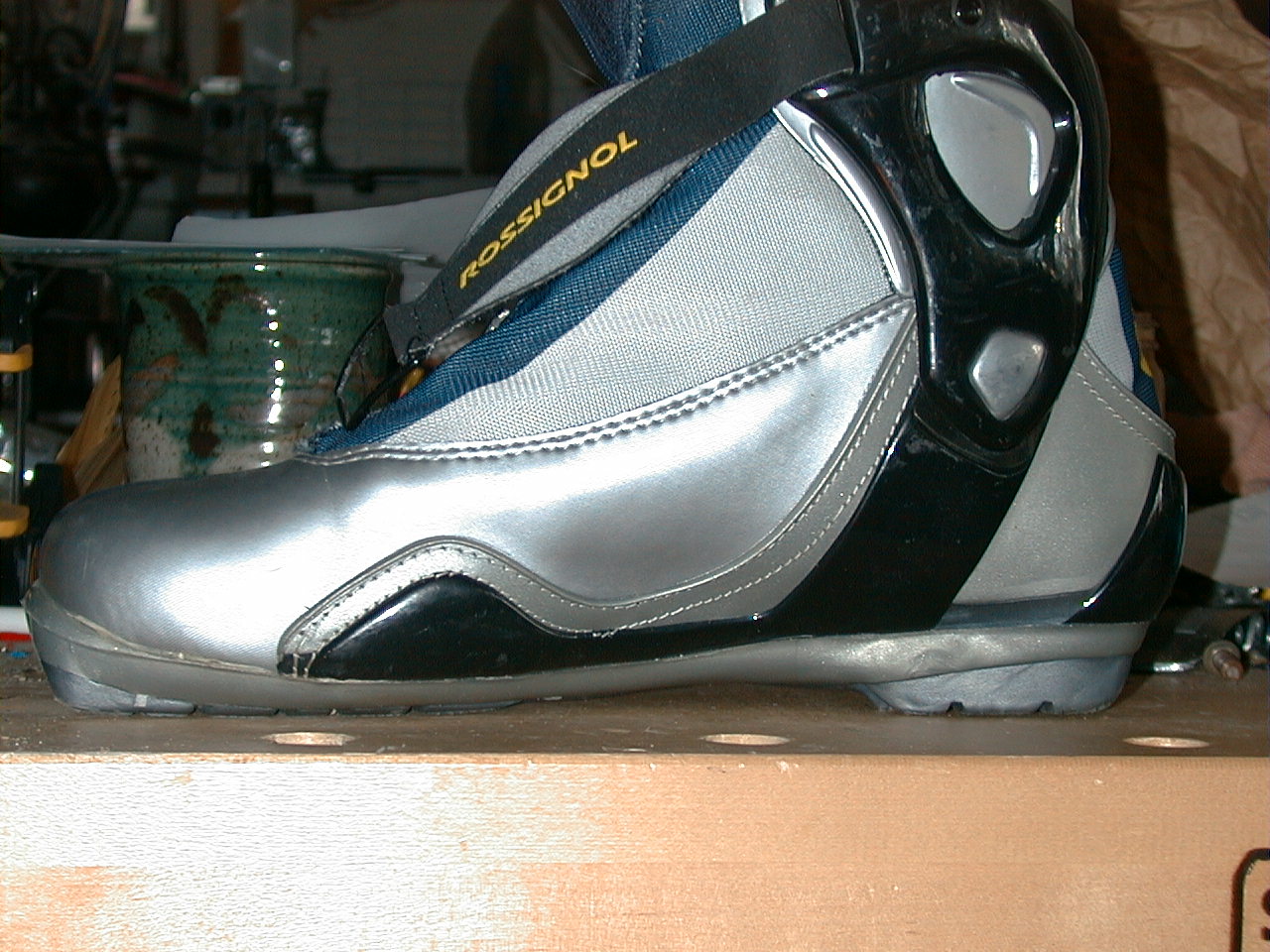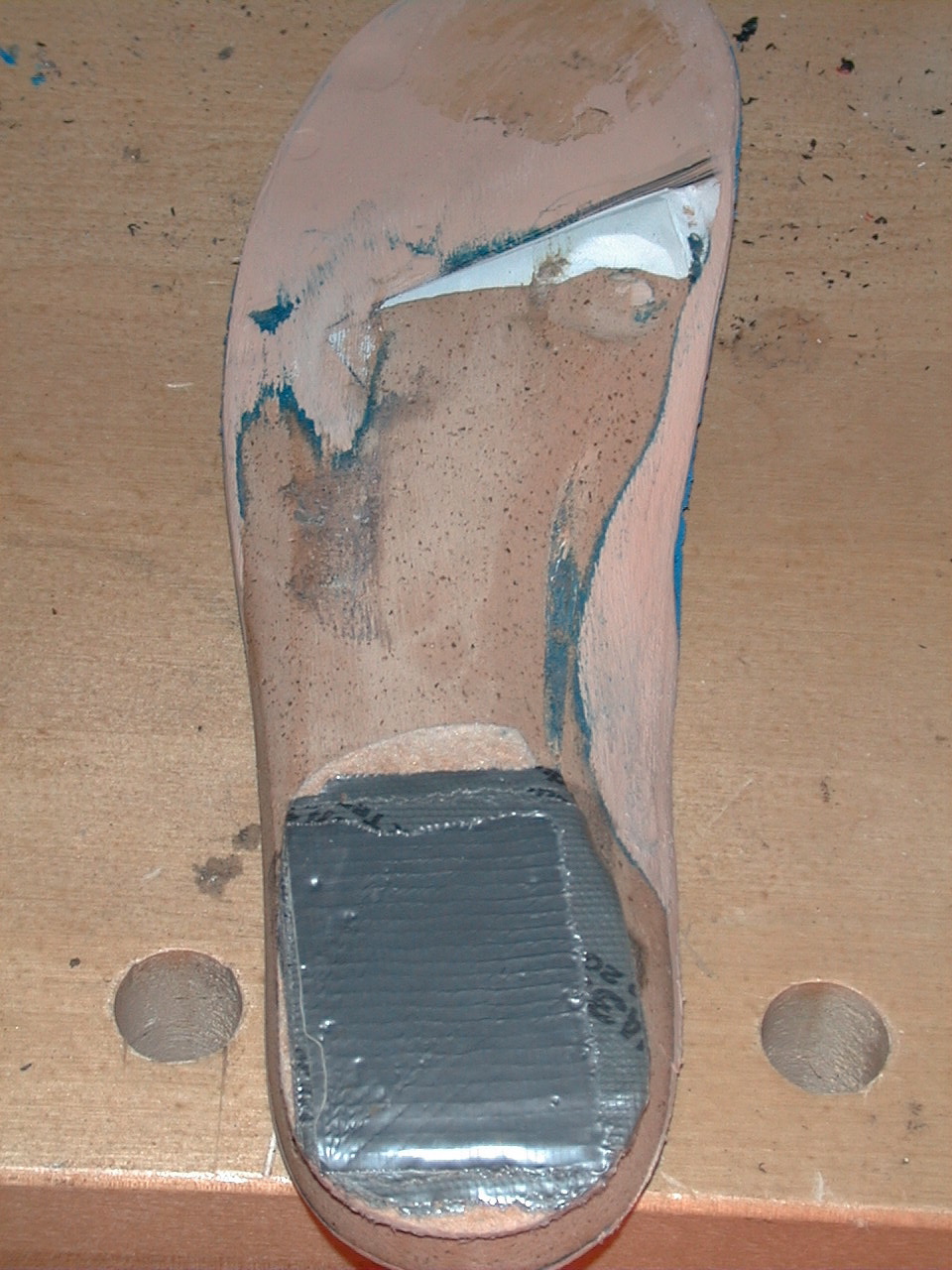Heel height as pertains to skate skiing
Tuning the heel height in your skate boots is well worth the effort. Proper heel height will provide the maximum range of movement, as well as reducing muscular effort and fatigue. Heel height and the need for proper foot support as well as canting are instrumental for optimal performance. (Foot support and canting will be covered in another article).
In general, if the heel is too high:
The muscles at the shin will burn intensely to the point of fatigue.
Leg flexion (compression) will be marginal or insufficient.
Downhill posture will be bent at the waist, shoulders forward, hips back.
Arms will fatigue prior to feeling much exertion in the muscles of the thigh.
Timing of pole strike will suck monkey lips.
Glide will be poor (Though glide is also affected by foot collapse and canting needs).
When climbing, there may be the sensation of stubbing one’s toes.
Shorter than normal poles might seem like a good idea.
Undulations and ripples will be difficult to absorb with the lower body; bending at the waist will be evident.
If the heel is too low:
Leg flexion will be good, but extension will be cut short.
Hamstring muscles will feel tight and fatigue before the quadriceps.
Glide will be good, then end abruptly as the leg reaches the functional limit of extension.
On upgrades, there may be the sensation of pushing oneself over backwards on extension.
Muscles of the lower back and gluteal region may tighten prematurely and remain as such.
On downhills, posture will be upright, but the lower back may be excessively arched, accompanied by the sensation of toppling over backwards.
Pole tips may skip on strike.
Release off of toe may be difficult.
If heel height is correct:
Full flexion and extension of the legs will be realized.
Quadriceps group will provide majority of propulsion.
Downhill posture will be loose and upright.
Slightly longer poles can be used without detriment.
Heart rate should be lower for an equivalent effort.
Glide will be uniform.
Climbing will be easier.
To lower the heel, you must raise the forefoot, adding material across the ball of the foot. Obviously, clearance in the toe box will limit how much you can raise the forefoot. Use a fairly dense material, similar to the shims ski shops place under an alpine boot liner to reduce volume. You can tape the shim material to the underside of the stock insole. Most boots are probably ‘off’ by at least a quarter of an inch, with the heel too high. For fine-tuning, you can use layers of thick tape. Nashua 357 is a good product to use for this.
At present, boots with a Pilot sole almost always have a lower heel than those using the NNN system.
If you suspect that your heel is too high, and you are due for a new pair of shoes, the Pilot sole would be a good idea. Regardless, it is much easier to raise the heel in a pair of skate boots than it is to raise the toes.
Raise the heel by the same method as described above. The shim should be trimmed to fit neatly into the heel pocket, and should not extend much into the arch area.
Heel high or heel lower, alter the height gradually until symptoms diminish. Smaller muscle tension issues will often present within the first few minutes of skiing. Issues with larger muscle groups may take longer to develop, but once they do, they will stick around. Try not to write this off as normal exertion or not being in shape. Basic propulsion on skis should not require all that much effort. Effort and fatigue should be proportional to expected velocity on a given gradient.
Thank you very much….good-night!



